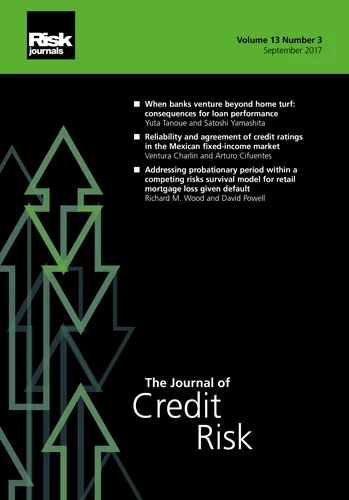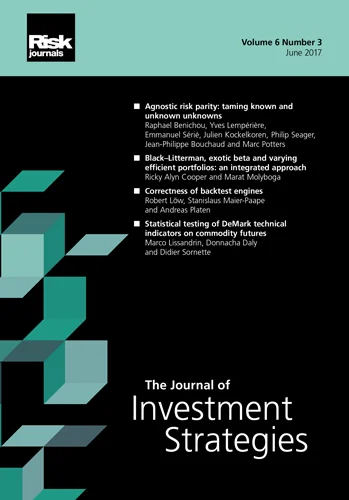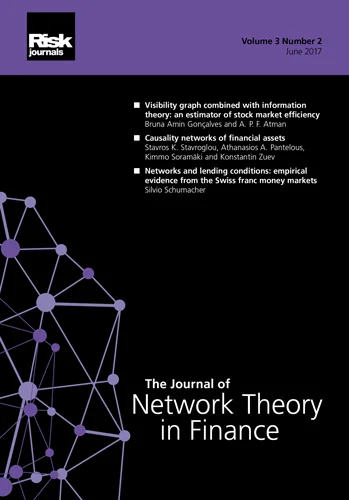Journal of Energy Markets
ISSN:
1756-3615 (online)
Editor-in-chief: Kostas Andriosopoulos
Volume 14, Number 2 (June 2021)
Editor's Letter
Derek W. Bunn
London Business School
The trading arrangements for electricity continue to offer research challenges for the design of efficient operations and practitioner opportunities to take advantage of their complexities. In the first paper in this issue, “Zone-wide prediction of generating unit-specific power outputs for electricity grid congestion forecasts”, David Schönheit, Constantin Dierstein, Lisa Lorenz and Dominik Möst focus on the increasingly important topic of cross-border capacity constraints in the day-ahead markets. They discuss the implementation of German “trading domains” comprised of nodal predictions for load and power generation, from which line flows can be derived, leading to congestion forecasts for two days ahead. Trading domains limit deviations from the predicted line flows to respect physical grid constraints and require accurate predictions of unit-specific power outputs. The authors’ analysis explores various statistical and statistical learning methods with the goal of adequately predicting the on/off status and power output levels of all power plants within a control zone. These methods are tested for 205 conventional generating units in Germany, using forecast values of fundamental variables, ie, load, renewable energy generation and availabilities of power plants. For most units, the extra trees approach achieves good results. Flexible units – especially hard coal, gas and pumped-storage hydro power plants – exhibit the largest errors. An analysis of the errors suggests that load and solar generation are the main drivers of prediction deviations.
An alternative electricity market perspective is given in the issue’s second paper, “Dynamic behavior of hydro/thermal electrical operators under an environmental policy targeting the preservation of ecosystem integrity and air quality” by Houeida Hedfi, Ahlem Dakhlaoui and Abdessalem Abbassi, in which the authors analyze the effect of an environmental policy aimed at enhancing ecosystem integrity as well as air quality in the wholesale market. They developed a dynamic Cournot game between hydro and thermal risk-averse electricity producers under demand uncertainty and demonstrated that, while improving air quality necessarily raises the market price, enhancing ecosystem integrity can reduce the market price under a water abundance hypothesis. The effect of the taxation policy on the efficiency of the ecosystem integrity policy depends on the hydro producer’s ability to substitute thermal units, and the regulation authority needs to compare, using appropriate criteria, the importance of an avoided unit of ecosystem impact against an avoided unit of air pollution.
Turning to oil markets, in “Causality between the oil prices and exchange rates: a quantile-on-quantile analysis”, Mehdi Seraj, Muhammad Mar’I, Alhassan Abdulkareem and Fatma Turuc examine the causal link between crude oil price and exchange rates in the five major oil-exporting countries (Saudi Arabia, Russia, Canada, the United Arab Emirates and the United States). These countries have recently adopted different exchange rate policies. Using a nonlinear causality approach, quantile-on-quantile, with monthly data from April 1996 to January 2020, Seraj et al found causal relationships between crude oil prices and exchange rates across quantiles in all five countries. One plausible explanation for these findings is that these countries are oil exporters who depend on the proceeds of the oil trade, but the effects are heterogeneous, depending on the level of crude oil production and consumption and the exchange rate policies of the countries as well as the strength of their economies.
Finally, carbon markets are reemerging as significant influences in the energy markets. In “Addressing competitiveness of emissions-intensive and trade-exposed sectors: a review of Alberta’s carbon pricing system”, Tyler Joseph Tarnoczi studies the Canadian province of Alberta, which introduced a revamped carbon pricing regime called the Carbon Competitiveness Incentives Regulation (CCIR) for large industrial emitters. This regulation set out the product benchmark emissions intensities and required facilities to purchase emissions credits for the portion of emissions that fall above the product benchmarks. With a focus on Alberta’s oil and gas industry, Tarnoczi assesses the mechanisms used under the CCIR to address competitiveness-driven carbon leakage for emissions-intensive and trade-exposed sectors. These mechanisms include exclusions, output-based allocations and financial compensation in the form of market-based compliance flexibility and access to innovation funding. The CCIR also provided additional cost containment for facilities that demonstrate significant economic risk resulting from carbon compliance costs. The output-based allocation, which is the primary policy mechanism to address competitiveness, is compared with the carbon pricing system in California. The review suggests that the CCIR failed to provide evidence that emission allocation levels were sufficient to mitigate carbon leakage. Further, the system’s definition of competitiveness failed to incorporate the ability to attract new investment, which is particularly important for the oil and gas sector due to its capital-intensive nature. Understanding policy options for protecting industry competitiveness from carbon pricing may help to inform future regulatory design that mitigates the likelihood of carbon leakage.
Papers in this issue
Zone-wide prediction of generating unit-specific power outputs for electricity grid congestion forecasts
This paper explores various statistical and statistical learning methods, with the goal of adequately predicting the on/off status and power output levels of all power plants within a control zone.
Dynamic behavior of hydro/thermal electrical operators under an environmental policy targeting the preservation of ecosystem integrity and air quality
This paper analyzes the effect of an environmental policy targeting the enhancement of ecosystem integrity as well as air quality in the wholesale electricity market.
Causality between oil prices and exchange rates: a quantile-on-quantile analysis
This study examines the causal link between the crude oil price and the exchange rate in five major oil-exporting countries (Saudi Arabia, Russia, Canada, the United Arab Emirates and the United States) that have recently adopted different exchange rate…
Addressing competitiveness of emissions-intensive and trade-exposed sectors: a review of Alberta's carbon pricing system
This paper assesses mechanisms used under the CCIR to address competitiveness-driven carbon leakage for emissions-intensive and trade-exposed sectors with a focus on Alberta’s oil and gas industry.








